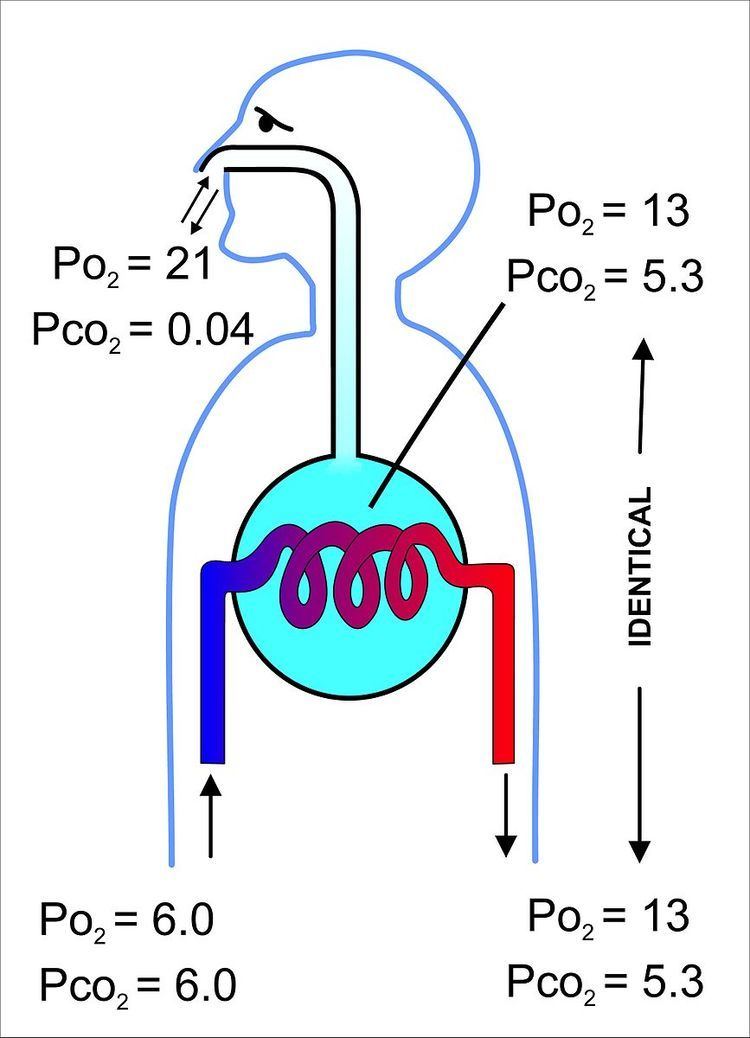Respiratory physiology is the branch of human physiology focusing upon respiration.
Topics include:
lung volumes
vital capacity
functional residual capacity
dead space
spirometry
body plethysmography
peak flow meter
Inhalation (breathing in) is usually an active movement. The contraction of the diaphragm muscles cause a pressure variation, which is equal to the pressures caused by elastic, resistive and inertial components of the respiratory system. In contrast, expiration (breathing out) is usually a passive process.
P
=
P
e
l
+
P
r
e
+
P
i
n
P
=
E
V
+
R
V
˙
+
I
V
¨
Where Pel equals the product of elastance E (inverse of compliance) and volume of the system V, Pre equals the product of flow resistance R and time derivate of volume V (which is equivalent to the flow), Pin equals the product of inertance I and second time derivate of V. R and I are sometimes referred to as Rohrer's constants.
Anatomy: pleural cavity, thoracic diaphragm, Intercostales externi muscles, Intercostales interni muscles
inhalation and exhalation
lung, pulmonary alveolus
With insufficient pulmonary surfactant, the pulmonary alveoli collapse, causing atelectasis (in infants, infant respiratory distress syndrome)
the law of Laplace,
compliance (physiology) - decreased with fibrosis, increased with emphysema
Poiseuille's law
asthma and COPD
hysteresivity
Circulation, ventilation, and perfusion
pulmonary circulation
positive pressure ventilation
hypoxic vasoconstriction
ventilation (physiology), perfusion, ventilation/perfusion ratio (V/Q), and ventilation/perfusion scan
shunts: right-to-left (tetralogy of fallot), left-to-right (patent ductus arteriosus)
respiratory rate and respirometer
Gas exchange/transport (primarily oxygen and carbon dioxide)
gas exchange
Dalton's law
hemoglobin
oxygen-hemoglobin dissociation curve, Bohr effect, Haldane effect
carbonic anhydrase
oxyhemoglobin
respiratory quotient
arterial blood gas
Control and response
control of respiration
reticular formation
pons (apneuistic and pneumotaxic)
chemoreceptors (medulla, carotid body, aortic body)
Hering-Breuer reflex
involuntary control of respiration
exercise
hyperoxia
hypoxemia (hypoxic hypoxia)
altitude sickness
asthma
carbon monoxide poisoning
chronic obstructive pulmonary disease
emphysema
infant respiratory distress syndrome
pulmonary edema

